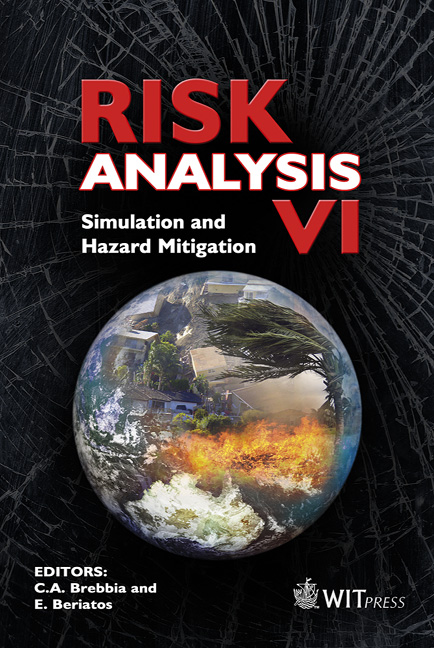Towards A Shared Method To Classify Contaminated Territories In The Case Of An Accidental Nuclear Event: The PRIME Project
Price
Free (open access)
Volume
39
Pages
8
Page Range
169 - 176
Published
2008
Size
931 kb
Paper DOI
10.2495/RISK080181
Copyright
WIT Press
Author(s)
C. Mercat-Rommens, S. Chakhar, C. Barde, S. Roussel-Debet & V. Mousseau
Abstract
The analysis of the management of the accidentally radioactive contaminated areas such as those around Chernobyl nuclear power plant highlights the fact that the current spatial classification methods hardly help in recovering proper use of the contaminated territory. The cause is mainly to be searched for in the traditional construction of risks assessment methods; these methods rest on criteria defined by institutional experts, which are not applicable in practise because they are not shared by all the stakeholders involved in the management of the contaminated territories. Opposite such top-down tentative management, local efforts supported by Non-Governmental Organizations to restore life in the contaminated area seem to be more fruitful but very time and resources consuming and limited to the specific areas where they are experimented. The aim of the PRIME project, in progress at the French Institute for Radioprotection and Nuclear Safety, is to mix the advantages of both approaches in building a multicriteria decision tool based on the territorial specificities. The criteria of the method are chosen and weighted with representatives of the territory’s stakeholders (decision makers, local actors and experts) to warrant that all the points of view are taken into account and to enable the risk managers to choose the appropriate strategy in case of an accident involving radioactive substances. The area chosen for the pilot study is a 50 km radius territory around the nuclear sites of Tricastin-Pierrelatte in the lower valley of Rhône (France). One of the exploration questions of the PRIME project is whether a multicriteria method may be an appropriate tool to treat the data and make them visible and accessible for all the stakeholders. Keywords: multicriteria analysis, radionuclide, post-accidental management.
Keywords
multicriteria analysis, radionuclide, post-accidental management.





